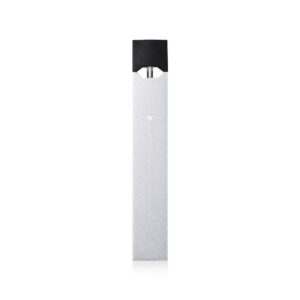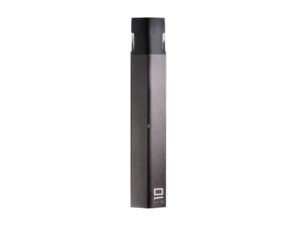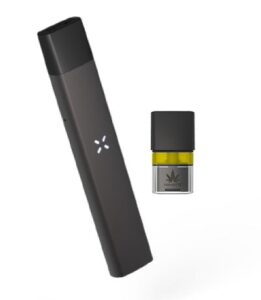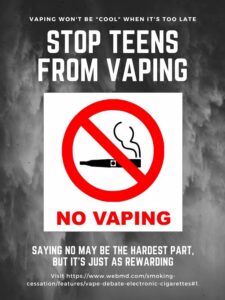

Do you vape?
 What are e-cigarettes?
What are e-cigarettes?
- E-cigarettes come in many shapes and sizes. Most have a battery, a heating element, and a place to hold a liquid.
- E-cigarettes produce an aerosol by heating a liquid that usually contains nicotine—the addictive drug in regular cigarettes, cigars, and other tobacco products—flavorings, and other chemicals that help to make the aerosol. Users inhale this aerosol into their lungs. Bystanders can also breathe in this aerosol when the user exhales into the air.
- E-cigarettes are known by many different names. They are sometimes called “e-cigs,” “e-hookahs,” “mods,” “vape pens,” “vapes,” “tank systems,” and “electronic nicotine delivery systems (ENDS).”
- Some e-cigarettes are made to look like regular cigarettes, cigars, or pipes. Some resemble pens, USB sticks, and other everyday items. Larger devices such as tank systems, or “mods,” do not resemble other tobacco products.
- Using an e-cigarette is sometimes called “vaping.”
- E-cigarettes can be used to deliver marijuana and other drugs.
What is in e-cigarette aerosol?
The e-cigarette aerosol that users breathe from the device and exhale can contain harmful and potentially harmful substances, including:
- Nicotine
- Ultrafine particles that can be inhaled deep into the lungs
- Flavoring such as diacetyl, a chemical linked to a serious lung disease
- Volatile organic compounds
- Cancer-causing chemicals
- Heavy metals such as nickel, tin, and lead
It is difficult for consumers to know what e-cigarette products contain. For example, some e-cigarettes marketed as containing zero percent nicotine have been found to contain nicotine.
What are the health effects of using e-cigarettes?
What Is JUUL?

News outlets and social media sites report widespread use of JUUL by students in schools, including classrooms and bathrooms.
- JUUL is a brand of e-cigarette that is shaped like a USB flash drive. Like other e-cigarettes, JUUL is a battery-powered device that heats a nicotine-containing liquid to produce an aerosol that is inhaled.
- All JUUL e-cigarettes have a high level of nicotine. According to the manufacturer, a single JUUL pod contains as much nicotine as a pack of 20 regular cigarettes.
- JUUL is one of a few e-cigarettes that use nicotine salts, which allow particularly high levels of nicotine to be inhaled more easily and with less irritation than the free-base nicotine that has traditionally been used in tobacco products, including e-cigarettes.
- News outlets and social media sites report widespread use of JUUL by students in schools, including classrooms and bathrooms.
- Approximately two-thirds of JUUL users aged 15 – 24 do not know that JUUL always contains nicotine.
- Although JUUL is currently the top-selling e-cigarette brand in the United States, other companies sell e-cigarettes that look like USB flash drives. Examples include the Mark-Ten Elite, a nicotine delivery device, and the PAX Era, a marijuana delivery device that looks like JUUL.
- Additional information about USB-shaped e-cigarettes and actions that parents, educators, and health care providers can take to protect kids is available at CDC’s Infographic.






